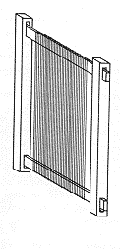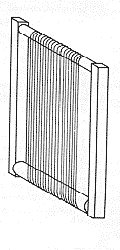Types Of Looms
There are two primary types of looms utilized in contemporary rug weaving. These are the ground or horizontal loom and the vertical loom. There are three types of vertical looms: the village type, the City type, and the roller beam type.

The ground or horizontal loom is the simplest of the looms. The warp threads are fastened to an upper and lower beam, which are held in place by stakes driven into the ground. It is used by nomadic tribes and village peasants because it is easily collapsed and may be moved from place to place. When the nomads are ready to move, the stakes are removed and the unfinished carpet is rolled around one of the beams. Once resettled, the weaver may unroll the carpet, reset the stakes, and again begin the weaving process.
The simplest of the vertical looms is the village type. The weaver may sit either on the ground or on a plank; the plank is raised or lowered so that the weaver is always seated directly in front of the area of the carpet on which he or she is working. The warp threads are attached to the upper and lower beams of a simple wooden frame. Although the length of the carpet is usually only as long as the distance between the upper and lower beams, it is possible to make the carpet longer by a complicated process. In this procedure the warp threads are loosened and the completed part of the rug is reattached to the lower beam. The warp threads are then retightened on the upper beam, and the weaving process is continued.

The City type loom, so named because it originated in the Iranian town of City, is a little more complicated than the village type. The warp threads pass in a continuous loop around the upper and lower beams. The weavers do not have to be raised with this type of loom because, as the weaving process progresses, the rug may be lowered down around the lower beam and up the back of the loom. The completed part of the carpet can then easily be inspected. With this type of loom, the length of the carpet can be made twice the distance between the upper and lower beams.
The roller beam type is the most advanced of the loom types. Warp threads are wound around the upper beam with their ends attached to the lower beam. As the weaving process progresses, the warp threads are un-wound from the upper beam and the finished part of the carpet is rolled around the lower beam. Carpets of any length can easily be woven.